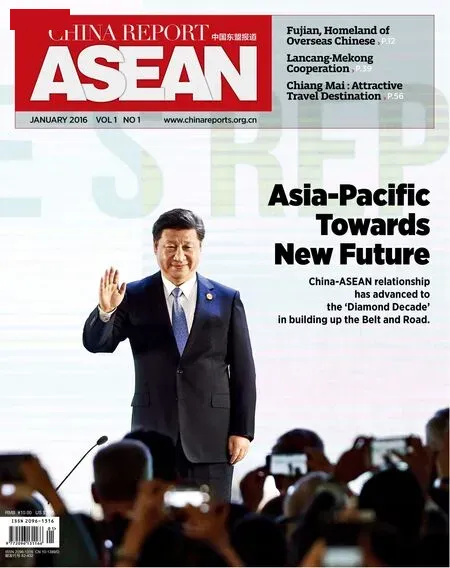LETTERS
Editor | Xia Hailin
LETTERS
Editor | Xia Hailin
China's FTZ Claims ASEAN Trade Boost
Supalak Ganjanakhundee, a journalist of The Nation, Thailand, after his travel to Fujian and Guangdong in July 2015
A Pilot Free Trade Zone - launched in China's coastal province of Fujian in April this year - was to take advantage of the nation's strong links with overseas Chinese in Southeast Asia, officials here said. The eventual goal was to help establish the 21st Century Maritime Silk Road.
Launched at the same time as a pilot free trade zone (FTZ) in Guangdong and Tianjin, the Fujian FTZ comprised three centers covering 118 sq. km in Pingtan,Xiamen and the province's capital city of Fuzhou. The FTZ was created to facilitate trade and investment by making the zone an internationalized, market oriented and law-based business environment, officials said. Business procedures in the FTZ would be eased through a "single window" system in order to have economic activities operate freely via the free trade zone. Fujian's foreign trade grew 4.8 percent to $117 billion last year,while foreign investment brought $161 billion to the province at the end of last year, according to authorities.
Since the launch of the Silk Road to link with ASEAN countries two years ago, ASEAN nations like Singapore,Malaysia and Thailand - where overseas Chinese are active in economic matters - have strong ties with Fujian via the FTZ, according to Fuzhou's Mayor Yang Yimin. Some 200 companies from ASEAN countries were now doing business via the FTZ in the city.
However, an official in Fuzhou said Beijing had drawn up a number of areas on a "negative list" in which foreigners were not allowed to invest. Under this "negative list", FTZ foreign investment would be prohibited in sectors such as certain non-ferrous metal mining, air traffic control systems' management, postal enterprises and production of radio and television programs. Foreign investments are restricted to joint ventures with domestic companies in sectors such as oil and natural gas exploration and development, generalpurpose airplane design, manufacture and maintenance as well as rare earths smelting, according to officials.
Where to, Philippines?
Maria Lourdes Tiquia, a journalist of Manila Times, Philippines, after her visit to Fujian and Guangdong in July, 2015
Taking a trip sponsored by the State Council Information Office of the People's Republic of China and ASEAN-China Center,organized by the China International Publishing Group and China Report, as well as representing the Manila Times is a unique experience to say the least. Learning about the 21st Century Maritime Silk Road is an opportunity one cannot pass.
The trip turns out to be a very hectic schedule covering three provinces and several cities in nine day. Indeed, China is huge. We traveled by air, land, sea and train. We covered history and culture,trade and industry as well as breakthroughs in R & D, technology and entrepreneurship, among others. We saw the cities, whose economic muscles will define the future of China, the economic strongholds in the municipalities and had several dialogues and conversations with very young and professional political leaders. It seems the future is bright for the young leaders in China.
The 21st Century Maritime Silk Road will cover more than "20 countries and regions that share a broad consensus on enhancing exchanges, friendship, safety and stability within the region and beyond. The 21st Century Maritime Silk Road requires the following efforts: First, consensus must be reached between major countries along the route to enhance maritime cooperation. Second,countries must engage in pragmatic cooperation along the route in the areas of trade, economy, culture and infrastructure. Third,countries along the route must engage in effective cooperation on ocean and climate change, marine disaster prevention and mitigation, biodiversity preservation and other areas of maritime policy."
As China's leaders defined their collective aspiration on building a "community of common destiny," what has our leader done in the past five years?
Beyond the rhetoric, the name-calling, sable rattling, and the soundbites as well as the purchase of ships, helicopters and armaments, what are our plans in the years ahead? Surely, BSA3 cannot shake the bamboos to create smoke against a giant. Surely, BSA3 will not allow the country to be a pawn in geopolitical moves of elephants. Surely, there must be a plan for our future as a maritime state, or are these wishful thinking? We have to be proactive as we need to have our shared, collective dream.

